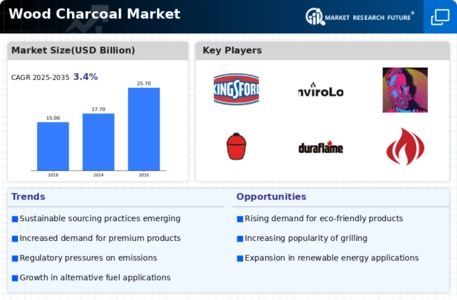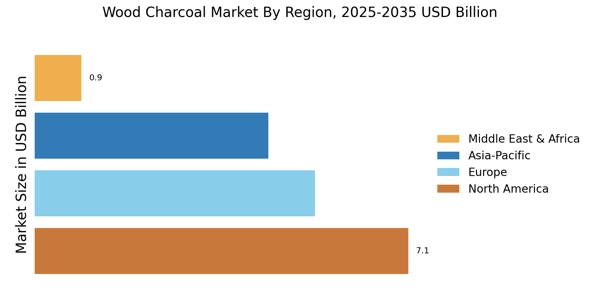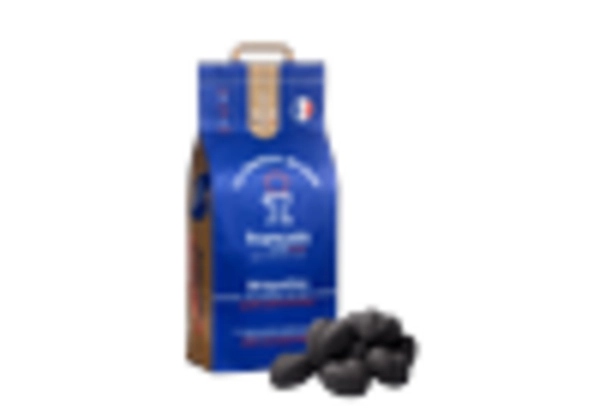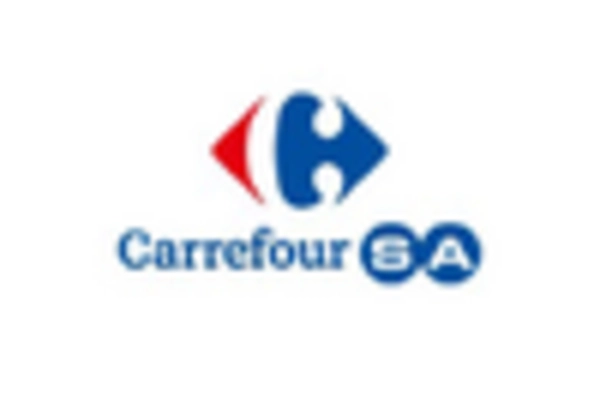Culinary Popularity
The culinary sector's increasing reliance on wood charcoal for grilling and barbecuing is a notable driver for the Wood Charcoal Market. Chefs and home cooks alike are drawn to the unique flavors imparted by wood charcoal, which enhances the taste of grilled foods. Recent surveys indicate that approximately 60% of consumers prefer wood charcoal over other fuel sources for outdoor cooking, suggesting a robust market potential. This trend is further supported by the rise of food festivals and outdoor cooking events, which often showcase wood charcoal as a preferred cooking medium. Consequently, the Wood Charcoal Market is experiencing a significant uptick in demand, as culinary enthusiasts seek high-quality charcoal products to elevate their cooking experiences.
Health Consciousness
The rising awareness of health and wellness among consumers is becoming a notable driver for the Wood Charcoal Market. Many individuals are seeking natural and organic cooking methods, which has led to a preference for wood charcoal over chemical-laden alternatives. Research indicates that wood charcoal is perceived as a healthier option, as it is often free from additives and chemicals. This shift in consumer behavior is prompting manufacturers to highlight the health benefits of their products, thereby attracting a more health-conscious demographic. As a result, the Wood Charcoal Market is likely to experience growth as it aligns with the evolving preferences of consumers who prioritize health and wellness in their cooking choices.
Sustainability Focus
The increasing emphasis on sustainability appears to be a pivotal driver for the Wood Charcoal Market. Consumers are becoming more environmentally conscious, leading to a heightened demand for products that are sourced sustainably. This trend is reflected in the growing preference for charcoal produced from renewable resources, such as sustainably managed forests. According to recent data, the market for sustainable wood charcoal is projected to grow at a compound annual growth rate of approximately 5% over the next five years. This shift not only aligns with consumer values but also encourages manufacturers to adopt eco-friendly practices, thereby enhancing their market position. As a result, the Wood Charcoal Market is likely to witness a surge in demand for products that meet these sustainability criteria.
Rising Outdoor Activities
The growing trend of outdoor activities, including camping, picnicking, and backyard barbecues, is significantly influencing the Wood Charcoal Market. As more individuals seek recreational experiences in nature, the demand for wood charcoal as a primary fuel source for outdoor cooking is on the rise. Recent statistics indicate that outdoor cooking equipment sales have increased by over 20% in the past year, correlating with a surge in wood charcoal consumption. This trend suggests that the Wood Charcoal Market is well-positioned to capitalize on the increasing popularity of outdoor leisure activities, as consumers look for convenient and effective cooking solutions for their adventures.
Technological Innovations
Technological advancements in the production and processing of wood charcoal are emerging as a critical driver for the Wood Charcoal Market. Innovations such as improved carbonization techniques and the development of efficient kilns are enhancing the quality and yield of charcoal produced. These advancements not only reduce production costs but also minimize environmental impact, aligning with the sustainability goals of many manufacturers. Data suggests that the introduction of these technologies could potentially increase production efficiency by up to 30%, thereby meeting the rising demand in the market. As a result, the Wood Charcoal Market is likely to benefit from these innovations, which could lead to a more competitive landscape.


















Leave a Comment